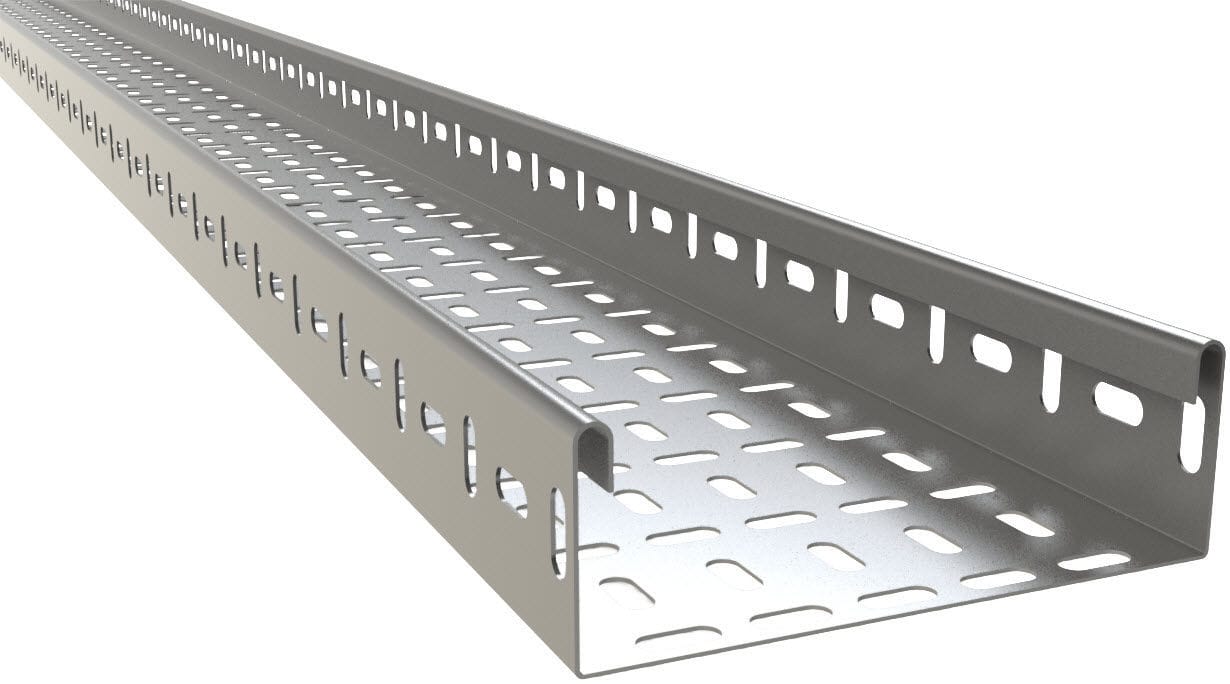In the ever-evolving landscape of infrastructure and connectivity, cable trays play a vital role in ensuring seamless operations across various industries. Whether it’s in commercial buildings, industrial facilities, or data centers, the efficient management of cables is essential for optimal performance and safety. In this article, we delve into the world of cable tray, exploring their types, benefits, installation process, applications, maintenance tips, and future trends.
Introduction to Cable Trays
Cable trays are structural systems designed to support and manage cables in various settings. They provide a safe and organized pathway for electrical wiring, data cables, and other types of wiring systems. Cable trays come in different materials such as steel, aluminum, and fiberglass, catering to diverse needs and environments.
Types of Cable Trays
Perforated Cable Tray
Perforated cable trays feature evenly spaced holes along the length of the cable tray, allowing for proper ventilation and heat dissipation. They are suitable for light to medium-duty applications and are commonly used in office buildings and commercial complexes.
Ladder Cable Tray
Ladder cable trays consist of parallel rails interconnected by transverse bars, resembling a ladder-like structure. They offer high load-bearing capacity and are ideal for heavy-duty installations in industrial settings such as manufacturing plants and power stations.
Wire Mesh Cable Tray
Wire mesh cable tray comprise welded or woven wire mesh panels that form a grid-like structure. They provide excellent flexibility and are suitable for environments where frequent cable adjustments are required, such as data centers and telecommunications facilities.
Benefits of Using Cable Trays
Proper cable management through the use of cable trays offers several advantages:
Organized Cable Management
Cable trays facilitate neat and organized routing of cables, minimizing clutter and reducing the risk of cable damage or tangling. This streamlined approach enhances efficiency during installation and maintenance procedures.
Enhanced Safety
By securely containing cables within designated pathways, cable trays help mitigate the risk of electrical hazards, such as short circuits or cable fires. Additionally, they prevent accidental tripping or entanglement, promoting a safer working environment for personnel.
Easy Maintenance
Maintaining cables housed within cable trays is more straightforward compared to traditional wiring methods. Routine inspections, repairs, and upgrades can be performed efficiently, minimizing downtime and optimizing operational continuity.
Installation Process of Cable Trays
The installation of cable trays involves several key steps:
Assessment of Requirements
Before installation, assess the specific requirements of the project, including the type and quantity of cables, environmental conditions, and load-bearing capacity.
Choosing the Right Type
Select the appropriate type of cable tray based on the application, considering factors such as cable density, size constraints, and environmental factors.
Mounting and Securing
Install the cable trays securely, ensuring proper alignment and support. Use suitable mounting hardware and brackets to secure the trays in place, considering load distribution and structural integrity.
Applications of Cable Trays
Cable trays find widespread use across various industries and settings:
Commercial Buildings
In commercial buildings, cable trays are utilized to route electrical and data cables for lighting, HVAC systems, and communication networks, ensuring seamless connectivity and functionality.
Industrial Facilities
Industrial facilities rely on cable trays to support heavy-duty cables for machinery, equipment, and power distribution, facilitating efficient operations and maintenance.
Data Centers
In data centers, where precision and reliability are paramount, cable trays provide a structured framework for organizing intricate networks of data cables and fiber optics, optimizing performance and accessibility.
Factors to Consider Before Installing Cable Trays
Several factors should be considered before installing cable trays:
Environmental Conditions
Evaluate the environmental conditions, such as temperature, humidity, and exposure to corrosive substances, to determine the most suitable materials and coatings for the cable trays.
Load Capacity
Calculate the anticipated load capacity of the cable trays based on the weight of the cables and any additional equipment or accessories that may be mounted on them.
Corrosion Resistance
Select cable trays with adequate corrosion resistance, especially in harsh or corrosive environments, to ensure long-term durability and reliability.
Maintenance Tips for Cable Trays
To prolong the lifespan and performance of cable trays, follow these maintenance guidelines:
Regular Inspection
Periodically inspect cable trays for signs of damage, corrosion, or loose connections. Address any issues promptly to prevent further deterioration or potential hazards.
Cleaning and Debris Removal
Remove dirt, debris, and accumulated dust from cable trays to maintain proper airflow and prevent obstruction of cable pathways. Use non-abrasive cleaning methods to avoid damaging the tray surface.
Repair and Replacement
Repair or replace damaged or deteriorated cable trays as needed, using compatible materials and techniques to maintain structural integrity and safety.
Future Trends in Cable Tray Technology
The future of cable tray technology is marked by innovation and integration with advanced systems:
Integration with IoT
Cable trays equipped with IoT sensors and monitoring devices enable real-time tracking of cable conditions, temperature, and performance metrics, enhancing predictive maintenance and operational efficiency.
Automation in Cable Management
Automated cable management solutions, incorporating robotics and AI algorithms, streamline installation, maintenance, and troubleshooting processes, reducing labor costs and human error.
Conclusion
Cable tray serve as indispensable components of modern infrastructure, providing a reliable and efficient means of organizing and managing cables for various applications. With their diverse types, benefits, and installation considerations, cable trays contribute to safer, more efficient operations across industries. As technology continues to evolve, embracing future trends in cable tray technology promises further enhancements in connectivity, reliability, and sustainability.
